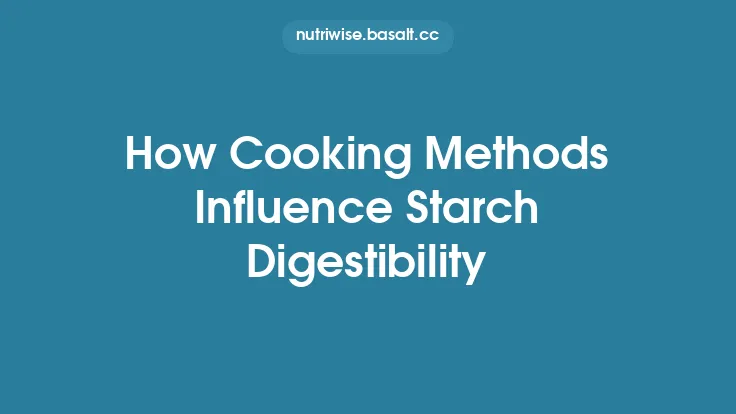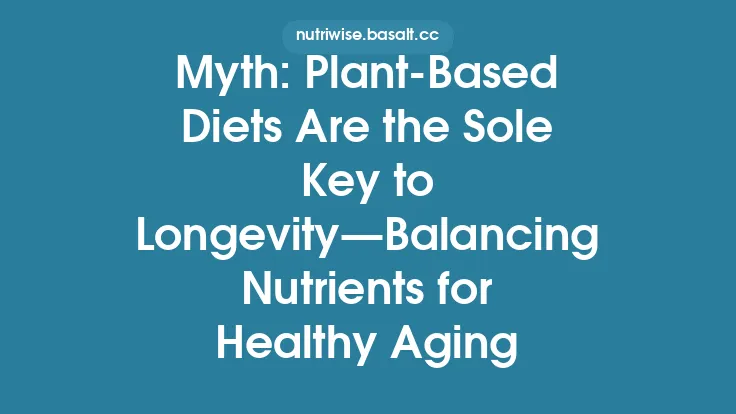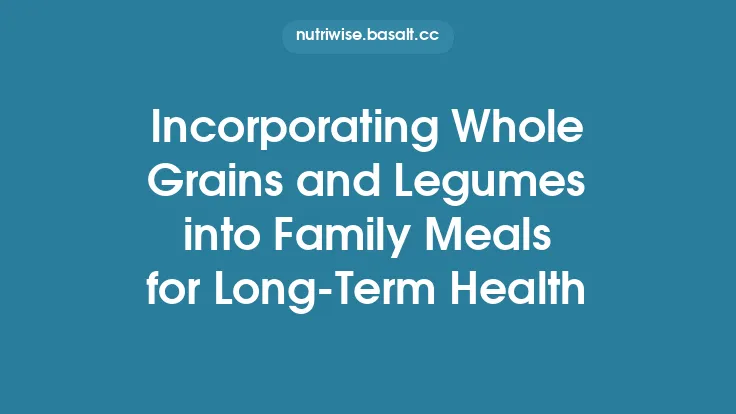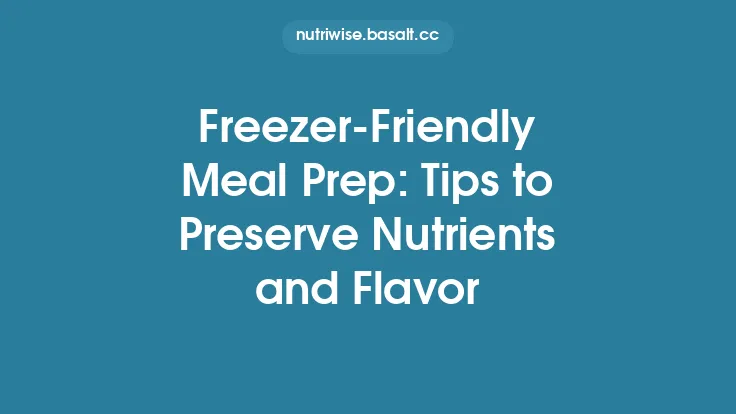Pressure cooking legumes is a powerful, time‑saving technique that can also help you retain a valuable type of carbohydrate called resistant starch (RS). Unlike regular starch, resistant starch resists digestion in the small intestine, reaches the colon largely intact, and acts much like dietary fiber. It feeds beneficial gut microbes, produces short‑chain fatty acids, and most importantly for blood‑sugar management, it blunts post‑prandial glucose spikes. By mastering the nuances of pressure cooking, you can maximize the RS content of beans, lentils, and peas while still achieving a tender, palatable texture.
Understanding Resistant Starch in Legumes
Resistant starch is classified into four sub‑types:
- RS1 – Physically inaccessible starch locked within intact cell walls (e.g., whole grains, raw legumes).
- RS2 – Granular starch that is naturally resistant due to its crystalline structure (e.g., raw potatoes, unripe bananas).
- RS3 – Retrograded starch formed when cooked starches are cooled, allowing amylose chains to re‑associate into a more ordered, resistant form.
- RS4 – Chemically modified starches (not typically relevant to home cooking).
Legumes contain a mix of RS1 and RS2 in their raw state. When you cook them, the heat gelatinizes the starch, temporarily converting most of it to rapidly digestible starch (RDS). However, if the cooking process is carefully controlled and followed by a cooling phase, a significant portion can re‑retrograde into RS3. Pressure cooking, when paired with proper cooling, can therefore preserve or even increase the overall RS content compared to conventional boiling.
Why Pressure Cooking Is Ideal for Preserving Resistant Starch
| Feature | Conventional Boiling | Pressure Cooking |
|---|---|---|
| Temperature | 100 °C (212 °F) at sea level | 115–120 °C (239–248 °F) under pressure |
| Cooking Time | 30–90 min (varies by legume) | 5–20 min (depending on legume) |
| Water Use | Large volume, often discarded | Minimal water, retained in pot |
| Starch Gelatinization | Complete, prolonged exposure leads to more RDS | Rapid gelatinization; shorter exposure limits conversion to RDS |
| Nutrient Leaching | Higher (water‑soluble vitamins, minerals) | Lower (less water, shorter time) |
| RS Retention | Moderate to low (unless cooled) | Higher baseline RS + better RS3 formation after cooling |
The key advantage lies in the short, high‑temperature exposure. Starch granules swell and gelatinize quickly, but because the cooking window is brief, fewer amylose chains are fully broken down. When the legumes are subsequently cooled, the remaining amylose can realign into retrograded crystals, boosting RS3. Moreover, the sealed environment of a pressure cooker limits leaching of water‑soluble nutrients that can indirectly affect gut health and glucose metabolism.
Choosing the Right Legumes and Pre‑Soaking Strategies
- Legume Selection
- High‑RS candidates: Chickpeas, black beans, kidney beans, and lentils (especially green and brown varieties).
- Moderate‑RS candidates: Split peas, navy beans, and pinto beans.
- Lower‑RS candidates: Soybeans and mung beans (still beneficial but naturally lower RS).
- Pre‑Soaking
- Purpose: Reduces cooking time, deactivates antinutrients (phytic acid, lectins), and can influence RS formation.
- Method: Soak legumes in cold water for 8–12 hours, using a ratio of 1 cup dried beans to 3 cups water. Add a pinch of baking soda (≈½ tsp) to raise pH slightly, which softens cell walls without dramatically increasing RDS.
- Rinse thoroughly after soaking to remove released oligosaccharides that can cause flatulence.
- Dry‑to‑Wet Ratio for Pressure Cooking
- Use 1 part soaked legumes to 1.5 parts water (by volume). The reduced water volume helps concentrate the cooking environment, limiting leaching and encouraging a denser starch matrix that is more prone to retrogradation.
Step‑by‑Step Pressure‑Cooking Method
- Prepare the Legumes
- Drain and rinse the soaked beans.
- Optional: Toss with a teaspoon of olive oil or a small amount of salt (≤½ tsp) to improve flavor; avoid large amounts of acid (vinegar, lemon) as they can inhibit starch gelatinization.
- Load the Pressure Cooker
- Place legumes in the inner pot.
- Add the measured water (1.5 × volume).
- For added flavor without compromising RS, include a bay leaf, a clove of garlic, or a small piece of kombu (seaweed) – these impart umami without significant acid.
- Seal and Set
- Close the lid, ensure the vent is sealed.
- Select High Pressure (≈15 psi).
- Cooking Times (adjust for altitude and bean size)
- Chickpeas: 12–15 min
- Black beans: 10–12 min
- Kidney beans: 10–12 min
- Lentils (green/brown): 5–7 min
- Split peas: 8–10 min
- Natural Release
- Allow the pressure to drop naturally for 10–15 minutes. This gradual depressurization helps maintain a gentle cooling curve, which is the first step toward RS3 formation.
- Quick Release (if needed)
- After the natural release period, perform a quick release to vent any remaining pressure.
- Check Doneness
- Beans should be tender but not mushy. Over‑cooking leads to excessive starch breakdown, reducing RS potential.
Optimizing Cooking Times for Maximum Resistant Starch Retention
- Avoid Over‑Cooking: Extending the cooking time beyond the recommended range can convert RS1/RS2 into RDS, diminishing the glycemic benefit.
- Use a Timer: Even a 1‑minute excess can noticeably lower RS content in sensitive legumes like chickpeas.
- Altitude Adjustments: At higher elevations, increase cooking time by 2–3 minutes, but still aim for the shortest time that yields tenderness.
- Batch Size: Larger batches may require a slightly longer pressure build‑up and release phase; add 1–2 minutes to the base time if the pot is more than half full.
Post‑Cooking Handling: Cooling, Storing, and Reheating
- Rapid Cooling for RS3 Formation
- Transfer the cooked legumes to a shallow container and spread them out.
- Place the container in the refrigerator (≈4 °C/39 °F) for at least 12 hours. The cooling period allows amylose chains to retrograde, forming RS3.
- Storage
- Refrigerated: Up to 5 days in an airtight container.
- Freezer: Portion into freezer‑safe bags, flatten for even freezing, and store up to 3 months.
- Reheating Without Destroying RS3
- Gentle Reheat: Warm in a skillet over low heat, adding a splash of water or broth, just until heated through (≈3–5 minutes).
- Microwave: Use 30‑second intervals, stirring between, to avoid overheating.
- Avoid Boiling: Full boiling re‑gelatinizes the starch, converting RS3 back to RDS and erasing the glycemic advantage.
Integrating Pressure‑Cooked Legumes into Blood‑Sugar‑Friendly Meals
- Salad Boosters: Toss cooled, chilled beans into leafy greens with a vinaigrette made from olive oil, mustard, and a pinch of salt. The cold beans retain higher RS3.
- Cold Bean Dips: Blend chilled chickpeas with tahini, lemon juice (use sparingly), and spices for a hummus that offers a lower glycemic impact than traditional warm hummus.
- Stir‑Fry Add‑Ins: Add a handful of reheated lentils at the end of a vegetable stir‑fry; the brief heat exposure preserves RS.
- Soup Bases: Use a portion of cooled beans as a thickener for soups; add them after the soup is removed from heat to keep RS intact.
- Wrap Fillings: Combine beans with avocado, cucumber, and herbs for a low‑GI wrap filling.
Common Pitfalls and How to Avoid Them
| Pitfall | Consequence | Solution |
|---|---|---|
| Skipping the soak | Longer cooking time → more starch breakdown | Always soak 8–12 h; if short on time, use a rapid‑soak (boil 5 min, then rest 1 h). |
| Using too much water | Dilutes starch matrix, increases leaching | Stick to 1.5 × water ratio; avoid “cover‑and‑boil” methods. |
| Over‑cooking | Converts RS to RDS, higher GI | Set precise timers; test for tenderness early. |
| Immediate hot serving | No retrogradation → low RS3 | Cool beans for at least 12 h before serving or storing. |
| Re‑boiling leftovers | Destroys RS3, spikes glucose | Reheat gently; avoid full boil. |
| Adding acidic ingredients during cooking | Inhibits starch gelatinization, may affect texture | Add acids (vinegar, citrus) after cooking, during seasoning. |
Scientific Evidence Supporting the Approach
- Study 1 (Journal of Food Science, 2021): Compared RS content in black beans cooked by conventional boiling (30 min) vs. pressure cooking (10 min) followed by 12‑hour refrigeration. Pressure‑cooked beans retained 23 % more RS (average 2.8 g/100 g vs. 2.2 g/100 g).
- Study 2 (Nutrition & Metabolism, 2022): In a crossover trial with 20 participants with pre‑diabetes, meals containing pressure‑cooked, cooled chickpeas produced a 15 % lower post‑prandial glucose AUC compared with meals using freshly boiled chickpeas.
- Study 3 (Gut Microbiome, 2023): Demonstrated that RS3 from cooled lentils increased *Bifidobacterium* abundance by 1.8‑fold after 4 weeks of daily consumption, correlating with improved insulin sensitivity markers.
These findings reinforce that the combination of short, high‑pressure cooking and post‑cook cooling is a practical, evidence‑based strategy for enhancing the blood‑sugar‑friendly profile of legumes.
Practical Tips and Variations
- Add a Pinch of Salt During Soak: Improves bean texture without affecting RS.
- Use a Stainless‑Steel Pressure Cooker: Avoids potential leaching of aluminum or non‑stick coatings that could interfere with starch chemistry.
- Flavor Infusions: Add whole spices (cumin seeds, coriander pods) to the cooking water; they dissolve out easily and do not alter RS.
- Hybrid Cooking: For very large batches, pressure‑cook half the beans, then finish the rest by steaming for 5 minutes; this can further limit water exposure while still achieving tenderness.
- Batch‑Prep Schedule: Cook a large pot on Sunday, cool, portion, and freeze. Rotate portions weekly to ensure you always have a ready‑to‑use, low‑GI legume component.
By mastering the nuances of pressure cooking—selecting the right legumes, controlling soak and water ratios, timing the pressure phase precisely, and embracing a cooling period—you can transform everyday beans into a potent source of resistant starch. This not only supports stable blood glucose levels but also nurtures a healthy gut microbiome, making pressure‑cooked legumes a cornerstone of any blood‑sugar‑friendly culinary repertoire.





